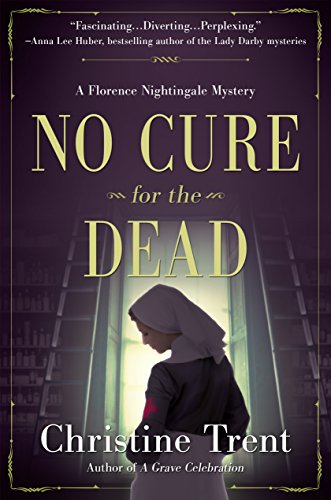No Cure for the Dead
In September 1853, Florence Nightingale has finally shaken off her mother’s demands that she make a good marriage and has left home to embark on her mission to help the sick. With the help of a friend who has an influential husband, she has taken on the position as Superintendent of the ‘Establishment for Gentlewomen during Temporary Illness’. Immediately she can see that changes are needed to bring the care of her patients up to any reasonable standard.
But before she can initiate any changes she finds the body of one of her nurses hanging in Florence’s favourite alcove in the library. It appears to be a suicide, but Florence immediately realizes that it must be murder. Her efforts to identify the murderer are hampered by the fact that she does not yet know any of her nurses and by the efforts of one of the hospital board members to remove her from her position.
While this novel is set in the time before Florence Nightingale distinguished herself nursing during the Crimean War, Christine Trent has clearly delineated her character. We see her as a young woman, inexperienced and occasionally naïve, but with a clear and dominant vision of what nursing care ought to be. Her persistence and common sense throughout her murder enquiries together with her simple but effective changes presage her future.
Clearly, a great quantity of research underpins this novel, although sometimes it is a little too obvious. The author has indeed been true to the times, the attitudes and the characters she reveals to the reader. From errand boy John Wesley to Secretary at War Sidney Herbert the characters are true to their role in the society of the time. Trent shows a thorough understanding of the early career of a significant Victorian figure.










